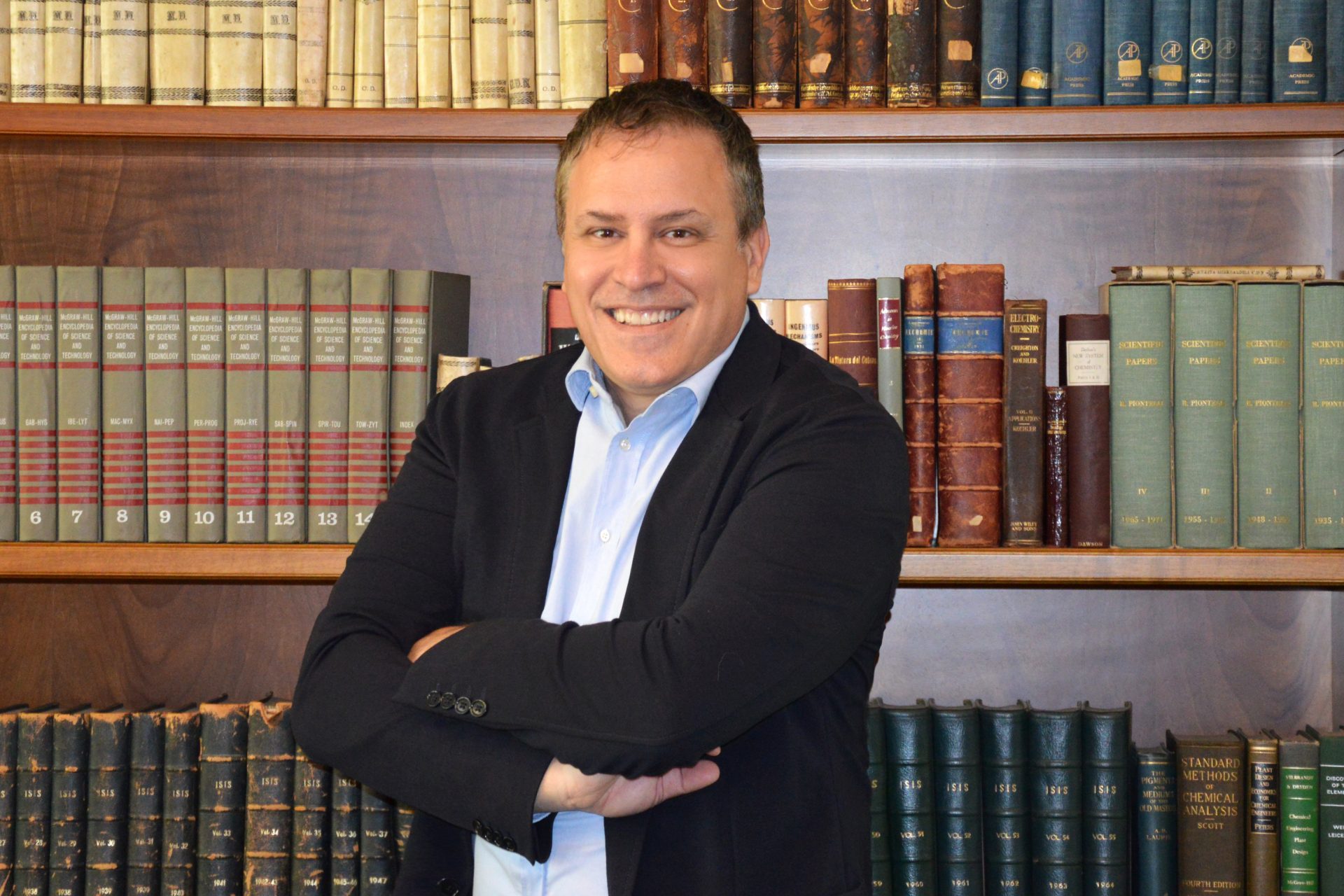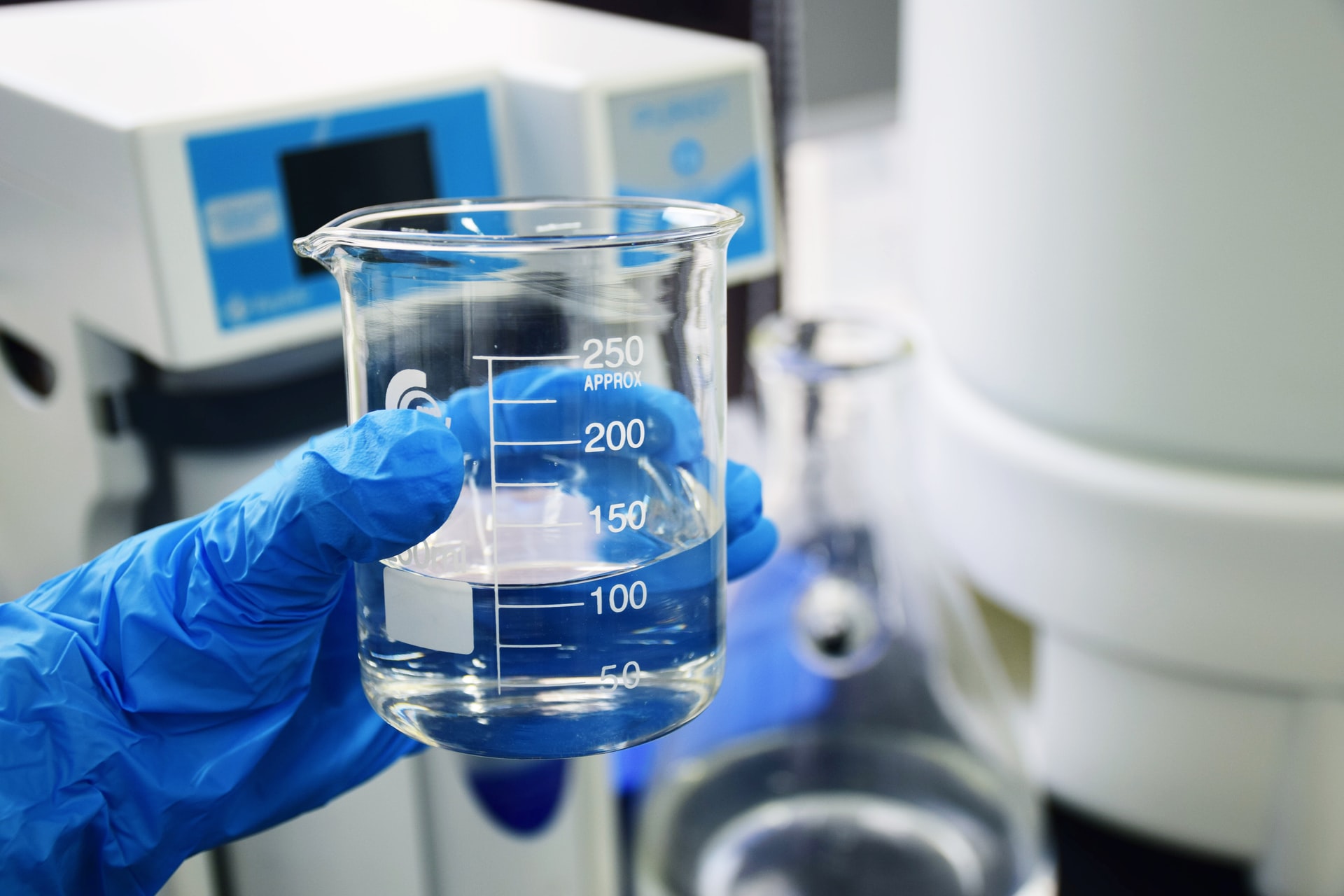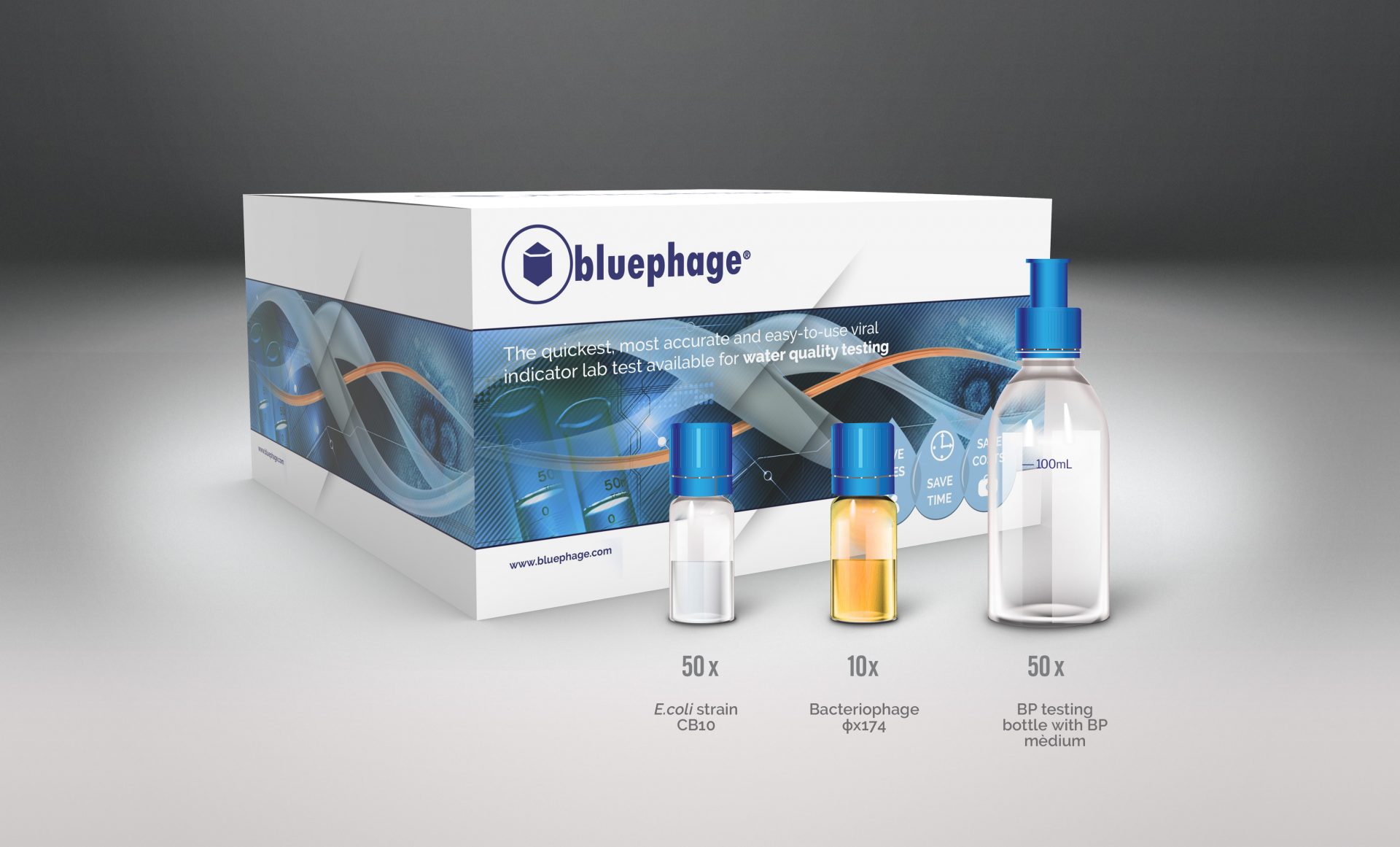BLOG | Bluephage
“It is crucial to initiate a widespread awareness process combined with rational water use, reuse, and circular economic systems”

Bluephage talks to Cristian Carboni, De Nora‘s Market Development Manager for Innovative Disinfection Systems for the development of water and wastewater treatment, especially in the field of disinfection, about the evolution of the water sector to ensure maximum reuse of this resource and thus be more sustainable in its consumption and use. Carboni is also an external expert of the European Commission and leader of the working group on health and public health of the Water Europe association and was the mentor of Bluephage during its submission to the Innowise 2021 Infrastructure Scale Competition, where Bluephage won the first prize and the special prize of the competition organized by EIT Food.
What was it like for you to guide a company like Bluephage through this experience?
First, I thank EIT Food for allowing me to mentor BLUEPHAGE, S.L., in the Innowise Scale Infrastructure Competition. We have had an incredible journey together, and winning the award was a fitting culmination of our work.
I was amazed by the energy of the working group and the awareness of operating to protect public health. I enjoyed working with the team because they have developed this new smart technology, which is very simple to use, and they are communicating and disseminating it in a humble, not presumptuous way. We worked side by side, and the team took note of all my suggestions; simultaneously, I got a lot of information and knowledge from Bluephage.
It was also interesting to work together because we worked on a real and concrete case where the Bluephage solution was selected by an Italian utility that identified in it the answer to their needs.
Could you elaborate on what these last 25 years of career and experience in management, research, and technological innovation have meant to you, especially in ozone applications ranging from defense to the food industry, and what are your plans for the near future?
These 25 years have allowed me to grow as a professional and try to create a better tomorrow through my daily work.
My plans for the future are to continue my work at De Nora, which consists of developing solutions that help safeguard the environment and people’s health and spreading knowledge of the problems and possible solutions, particularly those relating to ozone.
Ozone is an environmentally friendly technology that does not generate waste. From the microbiology point of view, the advantage of ozone is that it does not create resistant bacteria (as antibiotics or other active substances can do) since the use of ozone to eliminate viruses or bacteria is done through oxidation, breaking chemical bonds..
In addition, ozone can destroy micropollutants (such as drugs and hormones), odors, and colors in the water.
The latest trend in ozone technology mainly concerns the oxidation of micropollutants. However, one of the most interesting challenges for me is the application of the ozone to achieve selective sanitation (kill the bacteria or pathogenic fungi, but not the friendly ones) The majority of bacteria are friends of man. Out of 1400 families identified, only a few (about one in thirty thousand) are considered pathogenic.
It is estimated that around 39 trillion bacteria are present in our bodies (one trillion equals one thousand billion)! “Good” bacteria and fungi often act as antagonists of pathogenic ones, limiting their proliferation. If we kill all the bacteria and fungi (also the “good” ones) in all the media and environments around us, there could be the risk of leaving an environment free from antagonists, and this could favor, in case of contamination, the development of pathogens. With the studies we are carrying out in collaboration with prestigious universities and research institutions, we are identifying the concentrations and times of use of ozone capable of eliminating unwanted bacteria and fungi while preserving useful species.
I would also like to increase my activities as a mentor with young people and start-ups to encourage all those who are committed to a world that cares more about people and the environment. In my experience. In fact, innovative and exciting solutions emerge from collaboration with them, and different points of view and methods of communication are generated in an exchange that can enrich both
How do you think the water sector should evolve to ensure maximum reuse of this resource and thus be more sustainable in its consumption and use?
The water world initially thought of overcoming the problems related to water scarcity and sustainability by looking for alternative natural water sources, such as desalination. This is fine, but it is not enough.
Only with a greater supply of water of natural origin is there a risk of not making environmental problems visible, reducing investments for water reuse, and increasing the amount of water to be treated, which, if not properly treated, will have an impact on the environment. As happened with waste through awareness-raising and training campaigns and through waste separation and reuse systems, it is important to start a widespread awareness process combined with rational water use, reuse, and circular economic systems, extracting and also exploiting relevant resources such as nutrients, minerals, metals and also energy that are embedded in used water streams.
Rational use means reducing waste, starting with all losses from water pipes and using water with the minimum requirements for each use. For example, today, we do not use wastewater or rainwater collected for irrigation (also for our gardens) which may have lower quality requirements than drinking water, but we use drinking water which is the most valuable resource.
People feel water issues as something distant and complex without understanding that the value of water has to do with the use we make every day of this precious resource and how much we are willing to invest in protecting and reusing it (also in economic terms). We cannot leave this issue confined or driven by a single individual or by some tech company capable of inspiring and influencing only a certain number of people. We must be able to involve all the stakeholders, arriving at a global and collective vision and awareness through innovative and effective ways of communication and education. Every person counts, and every drop counts!
In the meantime, technology companies, driven by people’s awareness, supported by regulatory issues, and appropriate financial resources, should be able to implement many of the existing technological solutions and develop new ones.
In researching and applying wastewater treatment methods, do you think it is a priority to always keep in mind the routine and systematized control of viral and fecal contamination parameters?
It depends on the destination and the use made of the wastewater. Suppose wastewater is reused, for example, for irrigation purposes or is discharged into surface water. In that case, viral and bacterial contamination control is essential, as is the control of other contaminants such as Contaminants of Emerging Concern (CECs), metals, microplastics, etc.
Wastewater from toilets containing urine and fecal matter could carry waterborne pathogenic microorganisms, including protozoa, bacteria, and viruses that cause human disease. Waste from farms and other places where animals are present can also lead to water contamination. Inadequate wastewater treatment could increase the risks of microbial contamination in receiving water bodies and limit their beneficial uses, such as aquaculture, recreation, and irrigation.
However, the research of Somatic and F-specific coliphages is not limited to raw, reclaimed, and treated wastewater but should be extended to drink and surface water (bathing water, etc.)
Regulations are, in fact, different and provide for different concentrations of coliphage depending on the various types/uses of water, in line with the principle I was talking about before finding the right match between water quality and its uses.
The new Drinking Water directive (Directive EU 2020/2184 of the European Parliament and of the Council of 16 December 2020 on the quality of water intended for human consumption, for example, provides for the monitoring of the Somatic coliphages in raw water to control the efficacy of the treatment processes against microbiological risks (reference value of 50 Plaque Forming Units / 100 ml)
The Regulation EU 2020/741 of the European Parliament and of the Council of 25 May 2020 on minimum requirements for water reuse provides among the indicator microorganisms for the monitoring of reclaimed water for agricultural irrigation iF-specific coliphages, somatic coliphages or coliphages for pathogenic viruses provides among the indicator microorganisms for the monitoring of reclaimed water for agricultural irrigation iF-specific coliphages, somatic coliphages or coliphages for pathogenic viruses.
Do you think Bluephage’s disruptive technology can help mitigate the water crisis by supporting water laboratory professionals in near real-time monitoring of fecal and viral water contamination?
This was affirmed by the recognition of EIT Food, assigning two awards to Bluephage: the special prize and the first cash prize.
The kit created by Bluephage can quickly indicate the contamination levels of the analyzed waters with a simple, quick, and less expensive method than traditional methods.
Bluephage has set out to detect fecal and viral contamination of water using non-pathogenic coliphage viruses, an approach that bucks the trend of testing only for bacteria in water.
Somatic and F- specific coliphages (bacteriophages infecting coliform bacteria such as E.coli) are excellent indicators because they usually persist longer than bacteria in the environment. When there are coliphages, other viruses can be present in the environment but with lower concentrations. So monitoring Coliphages can give a quick indication of the bacterial contamination levels of the analyzed waters and alarm on the potential presence of other viruses.
The group somatic and F+ coliphages are valuable for investigating the virus elimination during water treatment steps and as indicators for viral water quality assessment. Strain level analyses (e.g., Qβ or GA-like) provide more information about specific sources of viral pollution but are more difficult to apply for routine monitoring.
I believe that the kit developed by Bluephage will be useful for many entities and companies (reclamation consortia, wastewater treatment plants, etc.) to implement routing controls with quick and simple systems.
How do you see the relationship between the scientific community, the spin-offs that arise from the ideas of this community, governments and policymakers, and the actual market demand that requires solutions to problems that affect the population’s health?
Innovative ideas are the first step in solving water problems, but the most important thing is to make them known, support them and make them a reality.
Often, the results of research and technological innovations are not known to the end users, and the population and the implementation of these results in regulations sometimes take 10 to 20 years after their discovery by the scientific community.
The regulations take years to implement and regulate technological innovations, to recognize and identify new problems.
Old ways of working may not provide fast and new answers for emerging water issues that require fresh and dynamic methodologies.
Europe has the chance to turn water challenges into new technological, social, and business opportunities, as is happening with the energy transition driven by the latest geopolitical events.
We don’t have to wait for emergency situations to act. We must increase coordination and collaboration of the water service providers, water users, technology providers, governments, and policymakers in an inclusive way to adapt the regulations and identify the financial coverage for each action in a short time.
You have just been awarded the Water Europe Innovation Awards 2022. What has this award meant for your recognition and your career?
I thank Water Europe and the award committee for selecting De Nora for the “Water Technology & Infrastructures” awards at the Water Innovation Europe event in Brussels. I am honored to receive this award because it’s a project I truly believe in!
Many years ago, I started working with engineers Riva and Giovanni Bergna, who believed in it until it was built in an actual plant.
We must leave a better world than the one we found, and that’s how we do it! With concrete and sustainable solutions, step by step.
I consider this award important not so much for the recognition it gives to De Nora or to me, but because it allows spreading the knowledge of a technology that can be useful to reduce the problem of sludge produced by biological purifiers considerably.
Cristian Carboni is the Market Development Manager Innovative Disinfection systems of Industrie De Nora S.p.a.
Over 25 years of experience in project management, research, and technological innovation, author of numerous scientific publications. In Industrie De Nora, he collaborates in the development of technologies relating to water and wastewater treatment, in particular concerning disinfection.
Member of the scientific committee of Polo Agrifood (Italy), member of the Board of Directors of the International Ozone Association, and Leader of the Water Europe Working Group Water and Public Health.
Since 2017 he has collaborated with the Executive Agency for Small and Medium-sized Enterprises (EASME) for the monitoring of the Actions under Horizon 2020; he is currently an external expert of the European Innovation Council and Executive Agency for SMEs (EISMEA).







